08 - Water movement and filtration
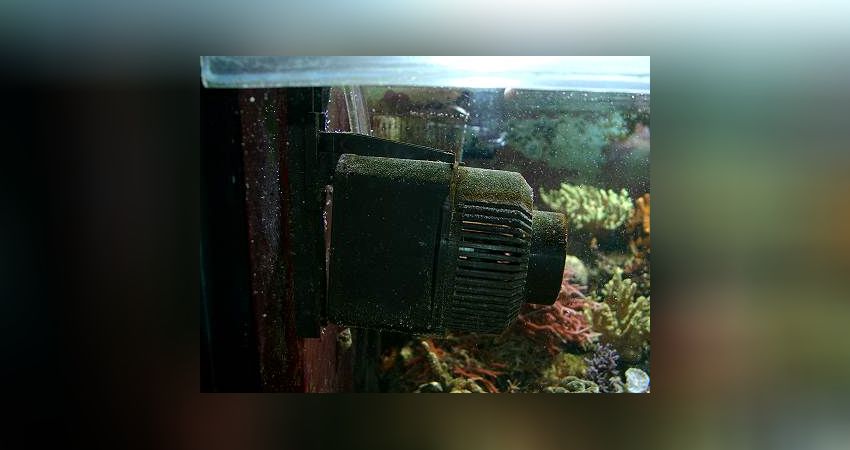
Tunze Stream
Here you can find out everything you need to know about flow and filtration
Water movement and filtration:
1. Water movement:
The same thing that applies to light applies to the same extent to water movement in reef aquariums....... It is just as important as the light over which most corals live.
Unlike in freshwater aquariums, sessile corals need a good and constantly high exchange of water. In 1999, Korallenriff.de reported in its first book "Introduction tips for saltwater aquarists" that the current strength is 5 - 10 times the tank volume. We do not want to pass on these figures in the same way today. The experiences of the last few years have made us a lot smarter. We will comment on this in the course of the article.
Tunze Stream
As described at the beginning, corals and other sessile invertebrates need a large exchange of water. The reason is obvious, they are sessile and cannot move. The water exchange serves both the exchange of waste matter that is washed away and the absorption of food and oxygen in the newly supplied water. As there is also a lot of suspended matter floating around in a saltwater aquarium, it is also important to prevent these substances from settling in the animals and disturbing them. In particular, we mean detritus deposits on and in the animals. This can be prevented by a good, preferably alternating water flow.
The trade offers many different sizes of flow pumps. Most of these are submersible pumps, i.e. pumps that are completely submerged. The so-called submersible centrifugal pumps are almost completely out of fashion, these were pumps where the casing is operated outside the water.
Now we come to the strength of the water movement:
As already mentioned at the beginning, the recommendations made were that you should take 5 - 10 times the volume of the pool. This is correct, but really only for the initial and set-up phase. If you stock your tank relatively quickly with hermatypical stony corals, you will probably notice very quickly that as the animals grow, the water flow in the aquarium becomes less and less. So, over time, the animals that are not sitting optimally and other animals that are standing in front of them suffer a lot of stress. Today we tend to think that in the beginning you need 5 - 10 times the current, but in a moderately populated tank it can be at least 10 - 15 times the current. This became clear to us after the introduction of more powerful aeration pumps (12,000 litres in some cases) and the rapid adaptation of the corals to the more powerful aeration. They look much healthier today than they did with a lower current. Today, the authors have arrived at about 20 times the amount of pollution. So the last point is the specification for full tanks of 15-20 times the tank volume.
Whoever now thinks that a strong current is the non plus ultra is also mistaken. There are many animals that do not need such a strong current and feel uncomfortable here. You have to observe your animals well and adjust the current or the location accordingly!
In order to achieve the best possible current distribution, you have the option of using several small pumps instead of one large one, which often results in better current. Alternating flow has also proven to be particularly good. This is especially useful for removing sediments from the bottom when the flow suddenly changes. An example: To do this, install four pumps of which only two run, let's say for 6 hours. Then the first two pumps switch off and the other two pumps start running. You can let them run at the same time, depending on how the animals react. The trade has suitable devices for controlling this.
Many people changing from the freshwater sector want to know for sure whether they want to continue using their filters. In itself, this is possible, under certain conditions. It is very important to note that you do not use a filter in which the heating is integrated. In the following article you will learn how such a filter can be used and what you should consider with regard to the filter materials.
2. Filtration:
1. Mechanical filtration:
Mechanical filtration means a type of filter that can be changed quickly and frequently, for example a filter basket attached to a circulation pump. This is often filled with filter wadding, foam or layered fleece. To put it simply, you could also say that the dirt has to come out! Anyone who runs a saltwater aquarium will quickly realise that there is a lot of suspended matter in the aquarium. In the opinion of the authors, however, these should be removed, as they can otherwise pollute the tank too much. It is very important to clean the filter after 2 to 3 days, either by washing out the material (in the case of foam) or by replacing the material (in the case of layered fleece or cotton wool). If you do not clean regularly, you no longer have a mechanical filter but a biological one. This leads to a decomposition of the retained substances, which subsequently represent a burden for the aquarium system.
Power Clear Filter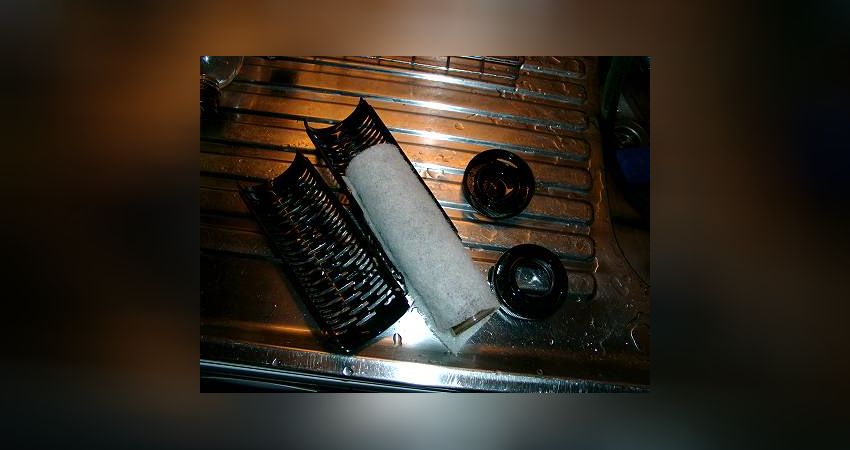
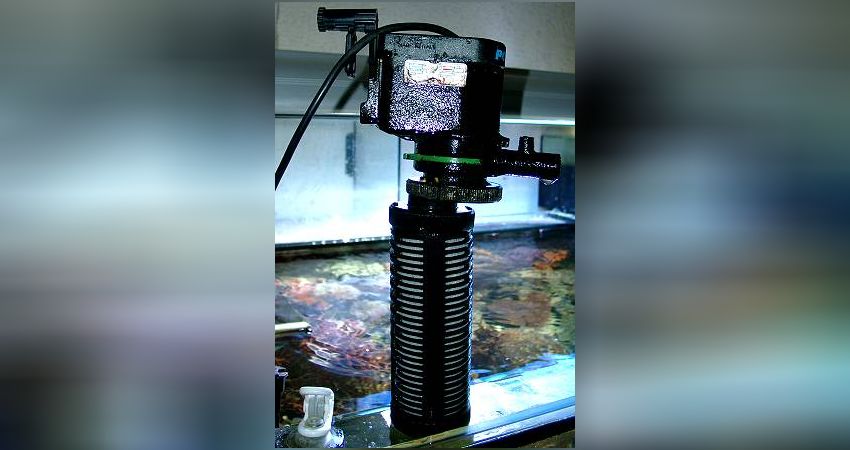
We can only explicitly point out that regular cleaning of the mechanical filters is extremely important! And to repeat ourselves once again, the dirt has to come out!
nach nur vier Tagen !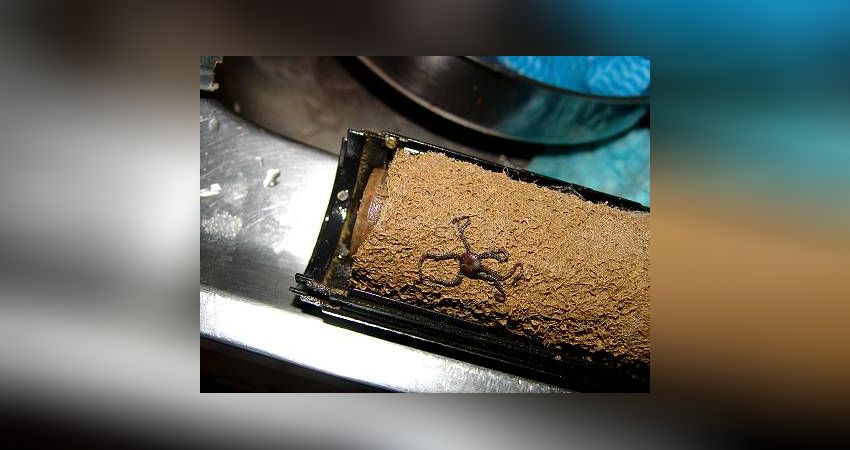
2. Biological filtration:
The trickle filters that were often used in the past caused nitrate to build up over time, precisely for the reasons mentioned, as it does not break down there but slowly builds up more and more. Let's just take a closer look at the bacteria story, what exactly is happening?
Ammonia - nitrite - nitrate Nitrification and denitrification:
The basis of life of the bacteria responsible for this process are ammonia and ammonium. After the placement of live stones, the system is first polluted, but at the same time the necessary bacteria are introduced. These bacteria feed on ammonia and ammonium as mentioned above. This bacterium is called Nitrosomas. This is produced by the decomposition of protein products (fish food, fish excrement, decomposition of tissue, etc.). The more a system is stressed, the more bacteria are formed to adapt to the requirements. If, on the other hand, the load decreases again, the bacteria also decrease.
The bacteria now begin to lower the ammonia content, while the nitrite content increases. This is where the second bacteria comes into play, Nitrobacter. As you can guess, Nitrobacter now takes care of the nitrite and converts it into nitrate. It should be noted that ammonia and nitrite can be highly toxic to all invertebrates and fish, but nitrate is relatively non-toxic, especially in small concentrations. And here we are at the last stage, denitrification. This again, in contrast to the aerobic (oxygen-rich) environment, takes place in the anerobic (oxygen-free) environment, i.e. only in porous limestone (living stones). Inside the stones are bacteria that process nitrate under oxygen-free conditions.
Because a lot of nitrate remains, especially in a filter with a lot of surface material (such as a trickle filter), many systems do not manage to break down the nitrate that has formed, which means that the nitrate level can continue to rise slowly. The existing bacteria do not manage to cope with the nitrate that accumulates. There are nitrate filters, as well as other possibilities that can be used here, but for a healthy system it is always better if the values are kept within limits and you do not have to correct too much. In the end, a lot depends on your fish stocking, feeding and anaerobic zones. The more living stones there are, the higher the turnover of bacteria and the lower the nitrate level will be.
It is therefore important, especially in the start-up phase, not to load the aquarium unnecessarily with fish before the tank biology has found its way. Bacteria strains build up in the first few weeks, and suitable water tests can be used to show how the values are changing. First a high ammonia value will be measured, then an increased nitrite value (with a falling ammonia value) and then a rising nitrate value and a simultaneously falling nitrite value.
3. Pot and external filter:
The authors are often asked what to do with their old external filter, which was often used in freshwater aquaristics, and whether it can be used in a marine aquarium.
A good question.
Of course you can use an external filter, especially for targeted filtration with carbon or phosphate adsorbers, for example. Permanent filtration is in itself counterproductive, as described above.
Hagen Filter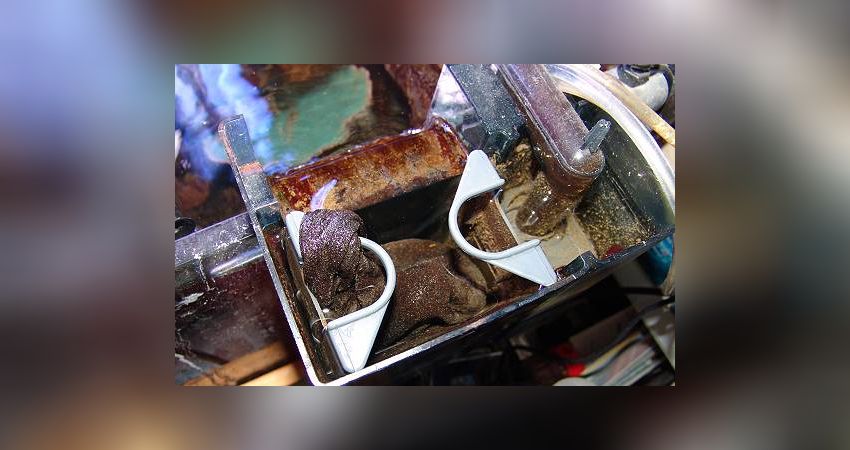
Better suited is an easily accessible filter to get at the materials
.
External filters are cleaned too seldom and the above-mentioned foci of fouling form. Since an anaerobic environment is rarely found in an external filter, nitrates are more likely to build up than to decompose. So we advise not to use an external filter in permanent use, if then without filter materials.
In our opinion, placing living stones in an external filter is of little use as too much detritus settles in the filter and only pollutes the stones. Here you can hardly expect that much nitrate can be reduced. It is better to leave this type of filter out of the system and use a protein separator appropriate for the system. The functioning of a protein separator will be explained later. However, it is important in the whole context of the bacteria stages that a good protein separator removes a lot of the load in advance and the bacteria are not overloaded.
We hope to have helped some "advice seekers" with this small article. For more detailed information, please contact your specialist retailer, who will also be able to show you the different types of mixtures available for the different numbers of litres.
Frank Diehl, Robert Baur-Kruppas
How do you like this article?
Info
Author

Bookmark
Comments
Topics
Similar articles
- 11 - Calcium supply:
- 18 - Ozone
- 0 - Marine aquaristics the 1x1
- How to create a marine aquarium-Part 12: Installing the carbon/adsorber filter
- 27 - Angelfish in a community aquarium?
- How a saltwater aquarium is created Part 17: Regular water changes
- How a seawater aquarium is created Part 33: Avoiding osmosis water flooding with Auto Aqua Smart ASOV
- How a marine aquarium is created-Part 3: The current
- How a saltwater aquarium is created- Part 10: Commissioning the Armatus 400
- 36 - Pests Part 1
Comments To the top
Please register
In order to be able to write something yourself, you must register in advance.







